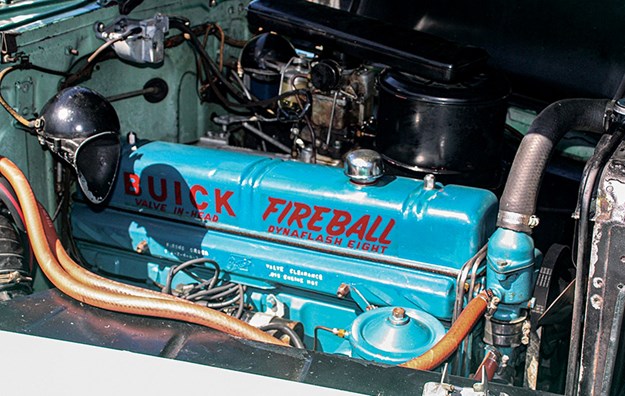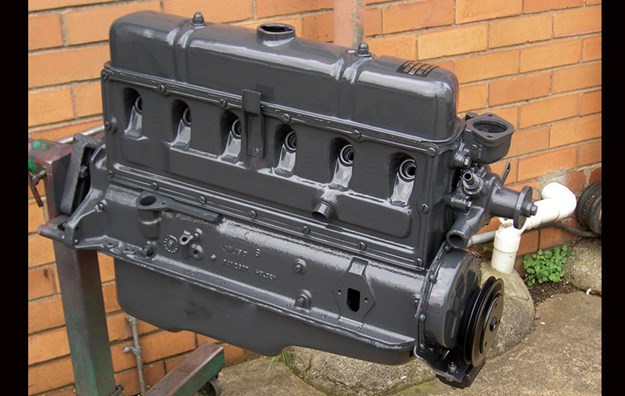Local Buick Legends - Blackborn



|
With no local manufacture since 1948, it’s easy to forget that Buick once had a significant presence in the automotive mix on Australian roads
I grew up in a GM family – while our car was a Holden, the die was cast much earlier when my Dad as a young fella bought an early Chev 6. He always had a good word for other GM marques as well, leaving me as a youngster struggling to understand why the GM stable included so many brands – Jaguar-made Jaguars, Ferrari-made Ferraris and MG-made MGs, so what was going on at GM?
Eventually I grasped that things were different in the USA – the ‘Big Three’ US factories were actually very B-I-G, big enough to field entrants in each of the market segments they had created. With Cadillac headlining the GM prestige-podium and the everyman-Chevrolet at entry level, the multiple-choice BOP group (Buick/Oldsmobile/Pontiac) defended the middle ground in descending price-tag order.
But that was then… Despite Oldsmobile’s solid track record and reputation as GM’s early-adopter of new automotive technologies, it was shut down in 2004. Pontiac, for a time the General’s performance brand, boasting labels like: "Wide-Track", "Tri-Power", "Bonneville" etcetera was also sacrificed on the bean-counters’ altar in late 2009. So then there was Buick…

Here’s what you got under a Buick bonnet
My earliest memories of Buicks were of the last of the big locally assembled 1946-48 8/40 models that simply refused to go away well into the 1960s. When General Motors-Holdens Pty Ltd (GM-H) stopped building Buicks in 1948 to make way for "Australia’s Own" Holden many 8/40 owners responded by simply hanging on to their much-loved Buicks. Prime Minister Bob Menzies was driving a 1946 model when he retired in 1968.
Buick, the oldest surviving American car brand, was the business that actually created General Motors in the US in 1908. In 1917 it was equally important to the original Adelaide Holden business transitioning from saddlery and coach building to automotive-body building. Buick bodies were among its first products. From 1923 Holden worked increasingly on building bodies across the full Australian General Motors range. By 1931 the GM-H partnership was formed, and the rest, as they say, is history. Local assembly of Buicks continued as an important part of the business before ending in 1948.
It’s fair to say that some Buick DNA lived on in the early Holdens. The bonnet and front-guard styling and particularly the shape and structure of the radiator grille of the 48-215 are very much junior-burger versions of the first post-war Australian Buick – our 1946 model. The family resemblance also shows in the shape of the rocker-cover stampings for Buick’s straight-eight motor and Holden’s grey-six. Ironically it’s interesting to note that much more recently some Holden Statesman Caprices were rebadged to fly the Buick flag in China, a still-important Buick market today.

Holden’s six looked like family
While Australian Buicks were the prestige car of choice for industrialists, senior politicians and bureaucrats (as well as colourful racing identities), the odd one fell into the hands of the larrikin fringe. An elderly classic car enthusiast I met some years ago told an interesting yarn (with twinkling eyes but no admission of personal guilt). A former diplomat’s 8/40, black, with heavily tinted windows, was used for a bit of fun by a bunch of mates. Apparently they were often waved through into secure car parks at VIP-only events.
More spectacular was the show they put on for patrons queueing outside a Hoyts cinema in suburban Northcote one Saturday night. Arriving first, the smallest crew member scurried ‘fearfully’ past the cinema-goers, constantly glancing over his shoulder. Then, just as he passed the end of the queue the Buick arrived, mounting the footpath, with overcoated and hatted occupants leaping out, grabbing the little bloke and tossing him in the boot, before the Buick accelerated off into the night. Apparently there was the complication of a public-spirited citizen giving chase, but the Buick’s top-speed advantage once they reached the open road sorted that out.
As I wrote this column a question remained unanswered. I have clear memories from the 1950s and 1960s of Buicks of varying ages crowded across the front of a former service station/garage at 548 Bell Street Preston, on a major arterial road in that northern Melbourne suburb. The forecourt was always chock-a-block with Buicks, with perhaps more locked away inside. The premises still exist, now hosting a car seat-cover business, but the Buicks vanished decades ago. Can any reader enlighten me as to what was going on there then, and what happened to all those Buicks?
From Unique Cars 473, Dec 2022/Jan 2023
Unique Cars magazine Value Guides
Sell your car for free right here
Get your monthly fix of news, reviews and stories on the greatest cars and minds in the automotive world.
Subscribe

.jpg)











.jpg)

